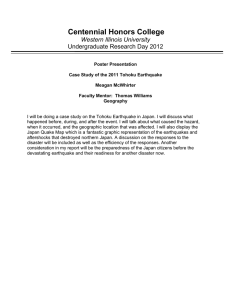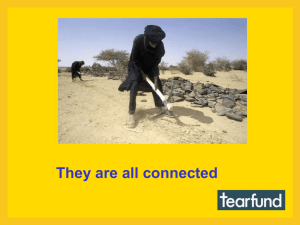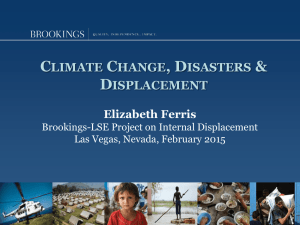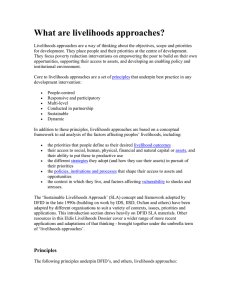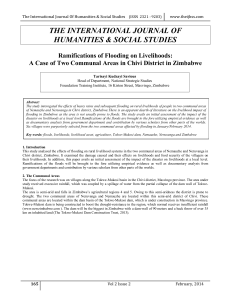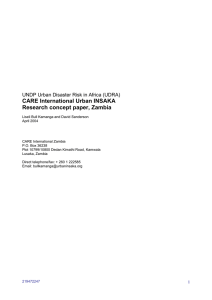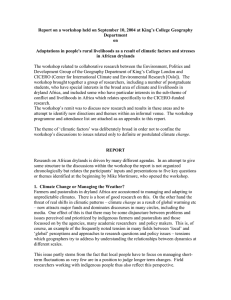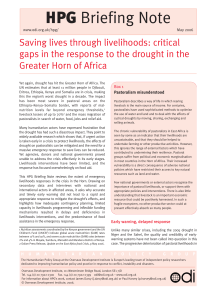5.
advertisement
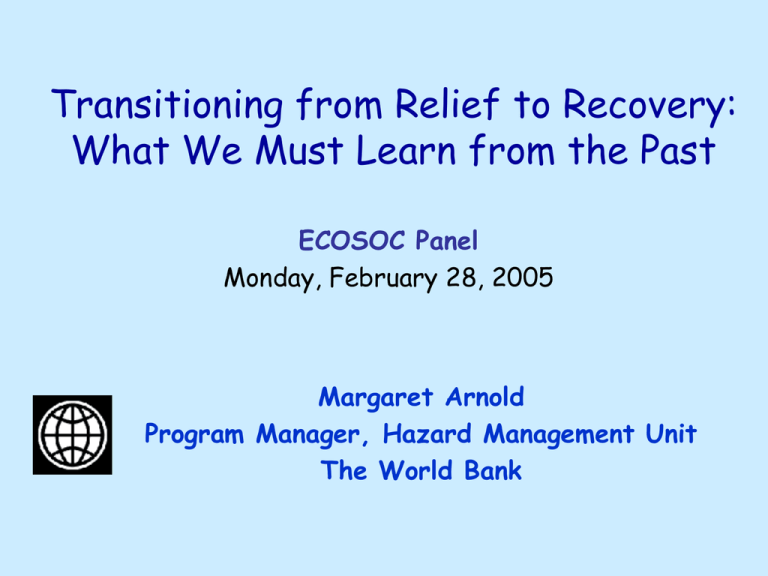
Transitioning from Relief to Recovery: What We Must Learn from the Past ECOSOC Panel Monday, February 28, 2005 Margaret Arnold Program Manager, Hazard Management Unit The World Bank Two Major Studies to Learn From ProVention Consortium- 2002-2003 Interagency review of 5 cases World Bank Operations Evaluation Department (OED) – ongoing World Bank experience of entire portfolio ProVention Consortium: Learning Lessons from Recovery 1. Bangladesh (’98 floods) 2. Honduras (Mitch 1998) 3. India (Gujarat 2001 earthquake) 4. Mozambique (2000, 2001 floods) 5. Turkey (1999 earthquake Policies Systems Resources Impact World Bank Operations Evaluation Department Review of WB experience from 1984 to 2004 Reconstruction and Prevention/Mitigation Portfolio Field cases, issues papers Currently underway, to be finished by end 2005 General Lessons 1. Lessons have not always been learned from disaster to disaster, even within the same country, leading to repetition of mistakes where they could have been avoided. 2. “Recovery” from disasters is an artificial term • Merges into the development process • Many poor communities live in a constant state of “recovery”, where “temporary” relief is a permanent coping strategy Timing of Recovery 3. Recovery projects are often too short to address the projected length of recovery. – Two timelines: • “real-time recovery”: 5-10 years • donors: 1-3 years, varies 4. Set realistic goals for the short and longerterms. – Keep emergency projects simple and flexible – Disaster risk management is long-term goal Framework: Assessing damage and needs 5. A comprehensive damage and needs assessment plays a key role in securing international support for recovery efforts and providing a framework for recovery. – Requires the participation from affected communities – Should be updated to adjust to emerging needs Institutions: integrating risk reduction into recovery 6. Government policies have been marked by a shift towards dealing with disasters as part of the development process, however, the implementation is mixed. 7. Effective institutions for recovery are not being set up, or supported, in a systematic fashion. Gaps: Participation and Livelihoods 8. Insufficient attention is paid to impact of recovery interventions on livelihoods, a crucial aspect of recovery. However, there was significant support on infrastructure and housing, which can be key instruments for economic and social recovery, in terms of providing shelter, supporting livelihoods, and restoring productive capacity. 9. Participation, participation, participation! – – High failure rates for programs that do not explicitly incorporate concerns of affected population Benefits: capacity building, improved governance, increased social capital, ownership, sustainability, addresses psychological trauma Challenge/Opportunity: Social Equity and Change 10.Assess and act upon opportunities for social equity and change. • Relocation is a major issue • Much can be done to promote gender equity
